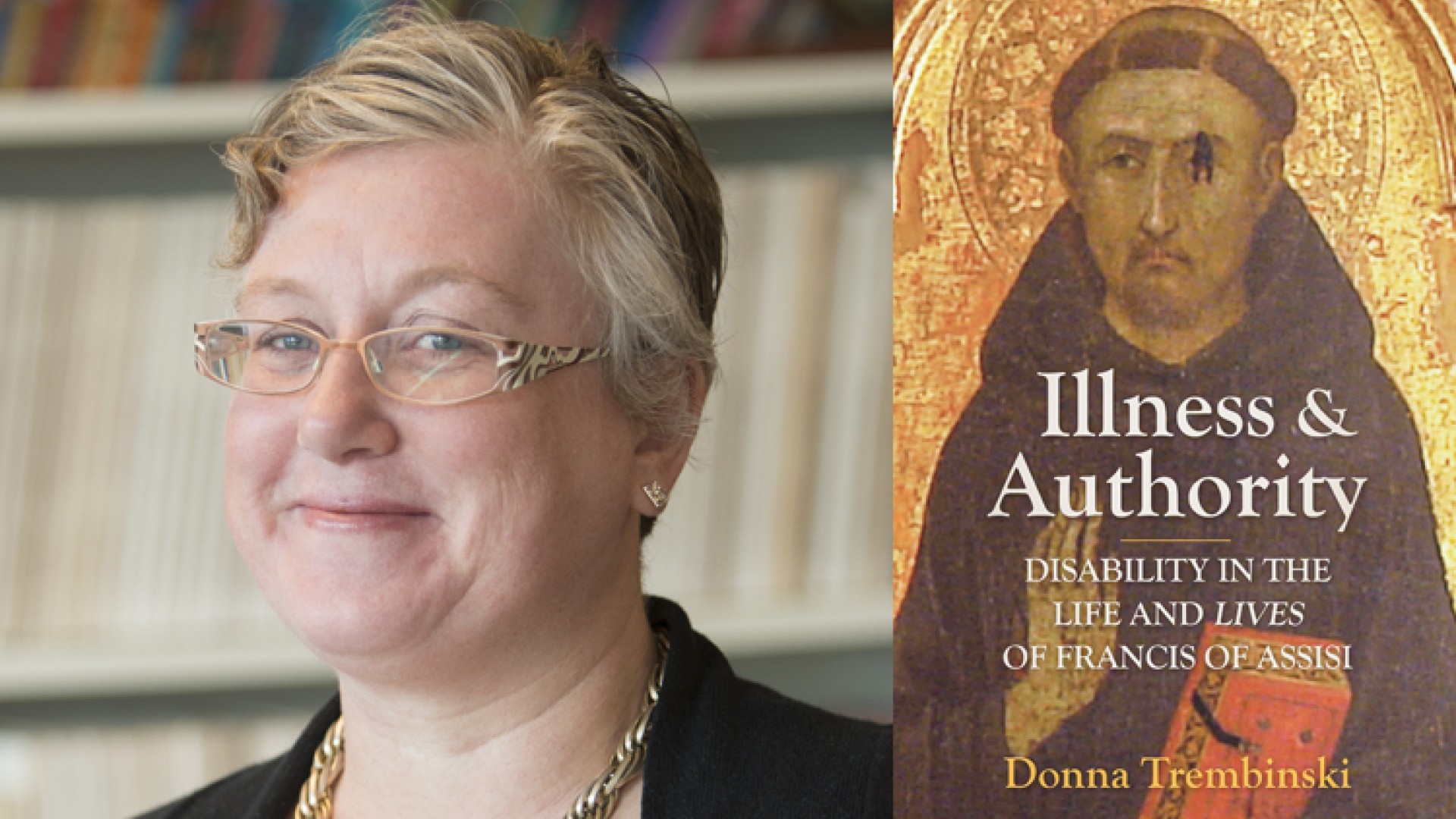
StFX medieval history professor Dr. Donna Trembinski has turned a new lens to a familiar subject, showing readers another, less readily seen side of the famous saint, Francis of Assisi, in her new book, Illness and Authority: Disability in the Life and Lives of Francis of Assisi, published by the University of Toronto press.
Illness and Authority examines the lived experience and early stories about St. Francis of Assisi through the lens of disability studies. This new approach re-centres Francis’s illnesses and infirmities and highlights how they became barriers to wielding traditional modes of masculine authority within both the Franciscan Order he founded and the church hierarchy, Dr. Trembinski says.
“When I told fellow medievalists I was writing a book about the 13th-century saint, Francis of Assisi, most groaned and said a variation of ‘we don’t need another book about Francis,’” the author writes in a blog post discussing her book.
“On the surface, this seems to be true. Francis is one of the most popular and beloved medieval saints. He is also one of the most studied. The University of Toronto library catalogue lists some 745 books and more than 9,500 articles in their catalogue alone. Surely my book isn’t necessary? I like to think, however, that it IS necessary because it brings new insights to an old topic and an older saint.”
Dr. Trembinski says she demonstrates with concrete examples in the book how engaging with disability as a category of analysis can further nuance our understandings of the past.
She says although Francis founded three religious orders, all of which still exist today, he is most famous for his personal and affective piety.
Dr. Trembinski says she’s been interested in the topic for a long time. “For my thesis, I read a lot of medieval saints’ lives including Francis’. His life just didn’t fit the mould in so many ways that I started to wonder why. Later on, as I read more, I came to understand that the story of his life had been massaged into a more acceptable shape by his later biographers. I wondered why that process happened and went looking. When I found that some lives of the saint literally disappeared doctors who accompanied and cared for Francis in his later years, I thought to myself, yeah, there is something here. Ten years later, there’s a book.”
She says many academic works have been written discussing Francis’ new brand of piety, his influences and how he, in turn, influenced piety and devotion in the Catholic Church after his death. “Few, however, reckon with the reality that Francis’ health was almost certainly compromised from his early adulthood and continued to worsen throughout his life, until, on the eve of his death, he was so infirm he could not walk, was suffering from unspecified illnesses of the spleen, liver, and stomach, and had a significant visual impairment,” she writes.
In Illness and Authority, she argues that it does matter that Francis was sick and infirm. “Because once we centre Francis’ illnesses and impairments, we start to see the ways they impacted how Francis lived and his ability to lead his order. This also brings into focus just how closely Francis’ early hagiographers managed the saint’s image by minimizing the reality and impacts of Francis’ illnesses in later lives in order to ensure that Francis accorded more with the expectations his audience had for a founder-saint.”
She says Francis’s resignation and his willingness to seek out treatments after being ordered to do so, when discussed at all, are most often couched in his desire for humility and to be bound to the will of God and his representatives in the Church. This reading occurs in both medieval and modern sources. “Yet, if we start to read the earliest sources for Francis’ life closely, this time attuned to the lessons the social model of disability teaches us – that societies and peoples can put barriers in place that prohibit people with infirmities from fully participating in society – we can begin to see that there might be an alternate explanation for Francis’ action,” she says.
“This, then, is the value of engaging with disability as a category of analysis. It allows us to see other possibilities in the past, and is a useful tool in deconstructing traditional and long-held narratives. Such a reading has the power to reorient historical perceptions of the saint. It is not a corrective, but it is a perspective that adds depth to our understanding of past figures like Francis.”
This research is, in part, made possible by the Government of Canada Research Support Fund.

